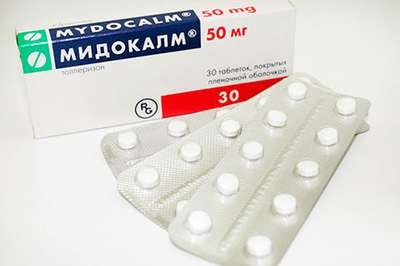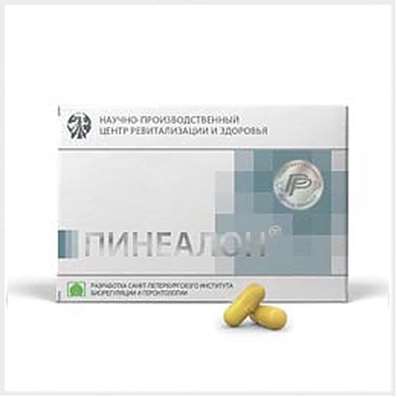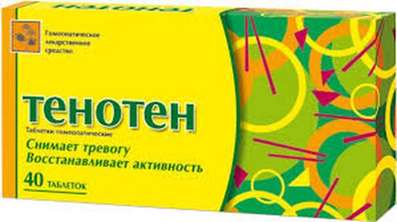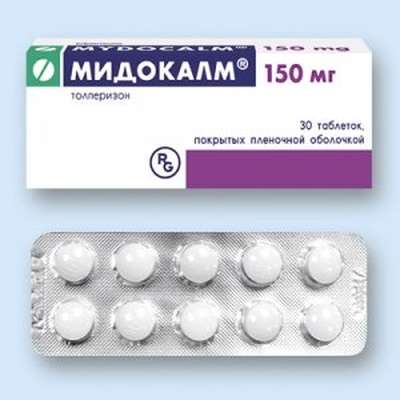Instruction for use: Brevibloc
I want this, give me price
Active substance Esmolol
ATX Code C07AB09 Esmolol
Pharmacotherapeutic group:
Beta-blockers
The nosological classification (ICD-10)
C74 Malignant neoplasm of adrenal gland
Glyukosteroma, corticosteroma, inoperable corticosteroma, Tumors of the adrenal gland
E05.5 Thyroid crisis or coma
thyrotoxic crisis, hypothyroid coma, Crease tireotoksicski
I10 Essential (primary) hypertension
Hypertension, Arterial hypertension, Arterial hypertension crisis course, Essential Hypertension
Primary hypertension, Arterial hypertension, complications of diabetes, hypertension, The sudden increase in blood pressure, Hypertensive disorders of blood circulation, hypertensive condition, hypertensive crises, hypertension, arterial Hypertension, malignant Hypertension, Hypertonic disease, Hypertensive crisis, Hypertension, accelerated hypertension, malignant hypertension, The aggravation of hypertensive disease, Transient hypertension, Isolated systolic hypertension
I15 Secondary hypertension
Arterial hypertension, complications of diabetes, hypertension, The sudden rise in blood pressure, Hypertensive disorders of blood circulation, hypertensive condition, hypertensive crises, hypertension, arterial hypertension, malignant hypertension, Hypertensive crisis, Hypertension, accelerated hypertension, malignant hypertension, hypertensive crisis, The aggravation of hypertensive disease, Transient hypertension, hypertension, Arterial hypertension, Arterial hypertension crisis course, renovascular hypertension, symptomatic hypertension, renal hypertension, Renovascular hypertension, Symptomatic hypertension
I20.0 Unstable angina
Unstable angina, heberden disease
I21 Acute myocardial infarction
Myocardial infarction in the acute phase, Acute Myocardial Infarction, Myocardial infarction with pathologic Q wave and without, Myocardial infarction complicated by cardiogenic shock, Infarction left ventricular, Transmural myocardial infarction, Myocardial infarction netransmuralny (subendocardial), Netransmuralny myocardial infarction, Subendocardial myocardial infarction, The acute phase of myocardial infarction, Acute myocardial infarction, Sub-acute phase of myocardial infarction, Subacute phase of myocardial infarction, Thrombosis of the coronary arteries (the arteries), Threatened myocardial infarction, Myocardial infarction without Q wave
I47.1 Supraventricular tachycardia
Supraventricular paroxysmal tachycardia, supraventricular tachyarrhythmia, Supraventricular arrhythmias, Supraventricular paroxysmal tachycardia, supraventricular tachyarrhythmias, Neurogenic sinus tachycardia, orthodromic tachycardia, Paroxysm of supraventricular tachycardia, Paroxysm of supraventricular tachycardia with WPW-syndrome, Paroxysm of atrial tachycardia, Paroxysmal supraventricular tachyarrhythmia, Paroxysmal supraventricular tachycardia, Politopnye atrial tachycardia, Atrial fibrillation, Atrial tachycardia is true, Atrial tachycardia, Atrial tachycardia with AV block, reperfusion arrhythmias, Reflex Bertsolda-Jarisch, Recurrent sustained supraventricular paroxysmal tachycardia, Symptomatic ventricular tachycardia, Sinus tachycardia, Supraventricular paroxysmal tachycardia, Tachycardia of AV connections, Tachycardia orthodromic, sinus tachycardia, The nodal tachycardia, Chaotic atrial tachycardia politopnye, Wolff-Parkinson-White
I48 Atrial fibrillation and flutter
Permanent atrial tachyarrhythmias, Relief frequent ventricular rate during atrial flutter or blink, atrial fibrillation, Paroxysm of atrial fibrillation and flutter, Paroxysm of atrial fibrillation, Paroxysmal atrial fibrillation, Atrial premature beats, Tahisistolicheskoy atrial fibrillation, auricular flutter, Life-threatening ventricular fibrillation, Atrial fibrillation, Chronic atrial fibrillation, supraventricular arrhythmia, Paroxysmal atrial fibrillation and flutter, Paroxysmal fibrilloflutter, Atrial premature beats
Structure and Composition
1 ml of solution for injection
Esmolol hydrochloride 10 mg
in bottles of 10 ml; 5 bottles per carton.
Concentrate for solution for infusion 1 ml
Esmolol hydrochloride 250 mg
in vials of 10 ml; 1 ampoule per carton.
pharmachologic effect
antianginal, hypotensive, anti-arrhythmic.
Blocks beta1-adrenergic receptors has cardioselective, deprived of its own sympathomimetic and membrane stabilizing activity. Suppresses sinus node automaticity, prolongs the refractory period and slowing down on the AV node. Stops central sympathetic impulses and reduces the sensitivity of peripheral tissues to catecholamines. It reduces heart rate, myocardial oxygen consumption of the heart (antianginal effect), cardiac output and blood pressure.
Pharmacokinetics
The full therapeutic effect develops within 2 min and terminated after 15-20 minutes after completing the infusion. T1 / 2 - 9 minutes. Report the news as an inactive metabolite.
Indications
Arterial hypertension, hypertensive crises of various etiologies, sinus tachycardia, supraventricular tachycardia and tachyarrhythmias (including atrial fibrillation, and atrial flutter, including during and after the operation); thyrotoxic crisis, myocardial infarction, pheochromocytoma, unstable angina.
Contraindications
Hypersensitivity, sinus bradycardia (less than 45 u. / Min), cardiogenic shock, AV block II-III degree, congestive heart failure, sick sinus syndrome, hypotension (Sad below 90 mm Hg and DBP below 50 mm Hg. v.), hypovolemia, bronchospastic syndrome, children's age (safety application has not been investigated).
Pregnancy and breast-feeding
Health and Safety has not been studied in pregnant women. In the absence of data on the possibility of penetration Brevibloka in mother's milk is not recommended during lactation.
Side effects
From the nervous system and sensory organs: rarely - tired feeling, drowsiness, confusion, headache, dizziness, speech disorders and / or vision, excitement.
Cardio-vascular system and blood (blood, hemostasis): rarely - hypotension, signs of peripheral ischemia, bradycardia, palpitations, thrombophlebitis.
Other: rarely - chills, fever, dyspnea, bronchospasm, constipation, urinary retention, burning, induration or infiltration of the skin around the injection site (at extravasation).
Interaction
Increasing the concentration of digoxin in the blood, enhances the hypotensive effect of inhaled anesthetics prolong miorelaksantny effect of succinylcholine (1.5 times). Morphine and increase the concentration of warfarin in the blood.
Dosing and Administration
B / in a dose of 500 mg / kg for 1 min (loading dose), followed by 50 mcg / kg / min for a further 4 min; maintenance dose - 25 mg / kg / min (or less); possible interval between the re-introduction - 5-10 min. With little effect during the first 5 min 2 doses reintroduced loading dose - 500 mg / kg over 1 min, followed by 4 min - 100 ug / kg / min (retries may increase the dose up to 150 mg / kg / min, then to 200 ug / kg / min). Upon reaching the desired level of the heart rate to stabilize the state can use propranolol hydrochloride 10-20 mg every 4-6 hours inside, verapamil 80 mg every 6 hours inside, digoxin 0,125-0,5 mg every 6 hours by mouth or I / O, 200 mg of quinidine every 2 hours inside (against application of the first dose in the first hour of infusion dose Brevibloka halved). In the case of the steady state of the patient during the observation time after administration of the first, or the introduction of the second dose of one of these drugs, the infusion can be stopped Brevibloka.
Where indicated during operating anesthesia bolus dose of 80 mg for 15-30 seconds, then infusion at a rate of 150-300 g / kg / min.
Brevibloka solution at a concentration of 250 mg / mL should be diluted before use in 250 ml of saline or 5% dextrose solution, 10 mg / ml - ready for use without further dilution.
Overdose
Symptoms: hypotension, bradycardia, bronchospasm.
Treatment: bradycardia - in / atropine sulfate or isoproterenol, or glucagon; with hypotension - in / in a liquid and a vasoconstrictor (epinephrine, norepinephrine, dopamine or dobutamine), and bronchospasm - isoproterenol or xanthine derivative.
Precautionary measures
Be wary appoint patients with bronhospasticheskimi diseases, diabetes, renal dysfunction. Avoid introducing greater than 10 mg / ml of the possible skin necrosis. Precautions continued infusion over 24 hours (learning experience is insufficient). It can be used 48 hours after the cancellation of verapamil and reserpine.
special instructions
It is not recommended to use needle-butterflies. Incompatible in the same syringe with 5% sodium bicarbonate solution.
Storage conditions
The temperature is not above 25 ° C (do not freeze). The mixed solution - at a temperature of 2-4 ° C is not more than 24 hours.
Keep out of the reach of children.
Shelf-life
solution for intravenous administration of 10 mg / ml - 2 years.
concentrate for solution for infusion 250 mg / ml - 3 years.
Do not use beyond the expiration date printed on the package.

 Cart
Cart





